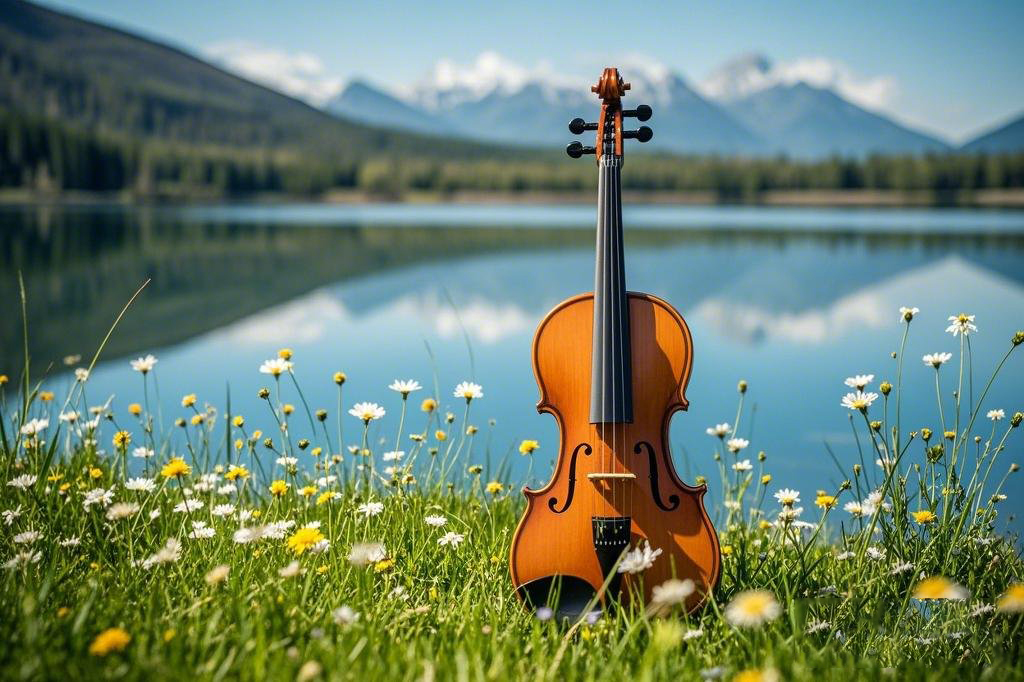Adult Violin Learning Transitioning to Intermediate Skills
Shang Kun 2025-11-06 43
Unlocking the Potential: Adult Violin Learning Journey to Intermediate MasteryEmbarking on the violin journey as an adult can be both exhilarating and challenging. The transition from beginner to intermediate skills is a pivotal moment, where the passion for music meets the discipline of practice. This article is designed to guide adult violin learners through this transformative phase, offering insights, tips, and strategies to help you elevate your skills and enjoy the process.
Understanding the Intermediate PhaseAs you progress from the foundational techniques to more complex ones, it's crucial to understand what the intermediate phase entails. This stage is not just about playing more difficult pieces; it's about developing a deeper understanding of music theory, improving your ear for harmony and melody, and refining your bowing techniques. It's a time to build on your existing skills and to start exploring the nuances that make violin playing an art form.
Mastering Bowing TechniquesBowing is the soul of violin playing. As you transition to intermediate skills, focus on mastering various bowing techniques such as legato, staccato, and spiccato. Practice these with a metronome to ensure consistency and control. Remember, "A smooth bowing technique is like a well-oiled machine—it requires precision and care."
Enhancing Music Theory KnowledgeMusic theory is the backbone of any musician's education. For adult learners, understanding scales, chords, and key signatures is essential. It's not just about memorizing notes; it's about understanding how they work together to create harmony. "Music theory is like a map—it guides you through the landscape of music," and as an intermediate violinist, you'll need this map to navigate more complex pieces.

Developing Ear TrainingAs you advance, your ear becomes your most valuable tool. Developing the ability to hear and reproduce intervals, chords, and melodies is crucial. Start with simple exercises and gradually increase the complexity. "A trained ear is like a compass—it points you in the right direction," especially when it comes to improvisation and playing by ear.
Building a RepertoireBuilding a diverse repertoire is key to becoming a well-rounded violinist. Explore different styles, from classical to folk, and don't shy away from contemporary pieces. Each piece you learn will teach you something new about the instrument and about yourself as a musician. "A violinist's repertoire is like a garden—diverse and ever-growing."
Practicing with PurposePracticing is the lifeblood of any musician. As an adult learner, it's important to practice with purpose. Set specific goals for each practice session and track your progress. Remember, "Practice is not the thing you do once you're good; it's the thing you do that makes you good."
Finding a CommunityJoining a community of violinists can be incredibly rewarding. Whether it's an online forum or a local ensemble, connecting with others who share your passion can provide support, inspiration, and constructive feedback. "A community is like a symphony—each part contributes to the whole, creating a beautiful harmony."
Staying MotivatedStaying motivated can be a challenge, especially when progress seems slow. Remember why you started playing the violin and let that passion fuel your practice. "Motivation is like a fire—it needs fuel to keep burning." Keep your goals in sight and celebrate small victories along the way.
Transitioning to intermediate skills is an exciting milestone in your violin journey. Embrace the challenges, enjoy the process, and let your love for music guide you. As you advance, remember that "the journey of a thousand miles begins with a single note," and each note you play brings you closer to your goal of becoming a skilled violinist.
